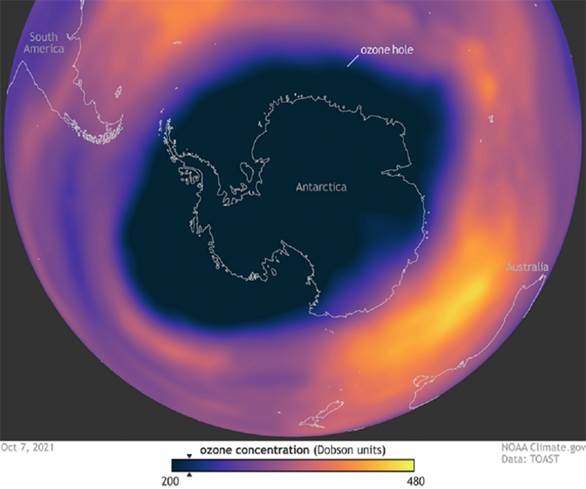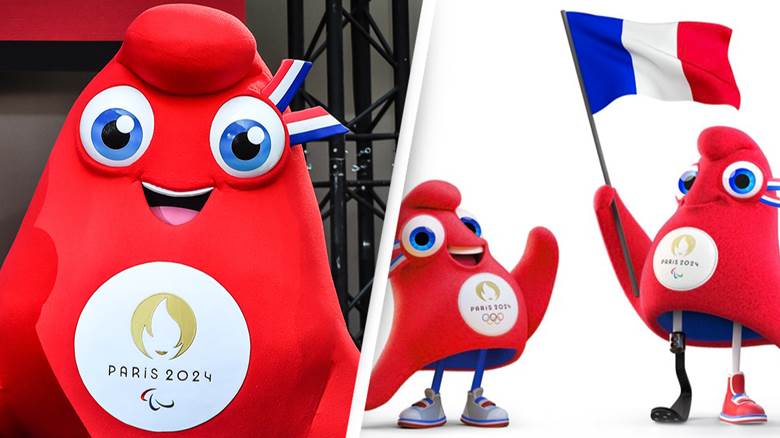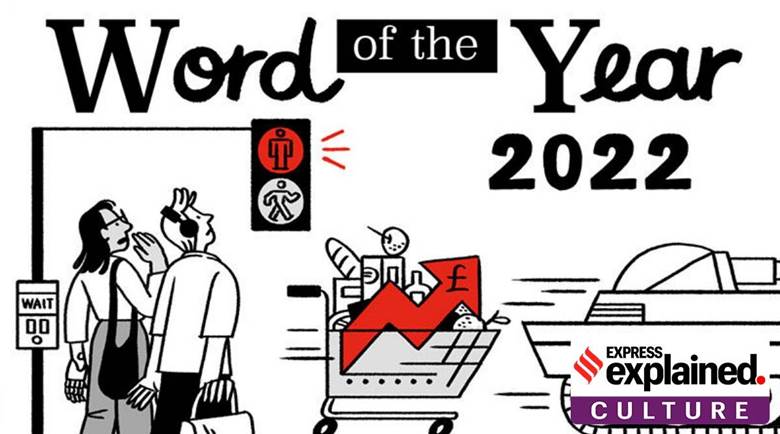Description

Copyright infringement not intended
In News
- The scientists of the National Oceanic and Atmospheric Administration (NOAA), under the United States Department of Commerce in their studies, have found that ‘Ozone-depleting substances concentration in the atmosphere has reduced this year.
- National Oceanic and Atmospheric Administration (NOAA) monitor the weather and oceanic and atmospheric conditions.
Details
- The ozone Depleting Gas Index by the National Oceanic and Atmospheric Administration (NOAA) tracks the overall stratospheric concentration of ozone-depleting chlorine and bromine.
- They Collect air samples around the globe and analyze them annually.
- Recently they found that the overall concentration of Ozone depleting substance (ODS) in the lower stratosphere had declined by over 50%.
- However, the pace of reduction in ODSs over Antarctica has been slower.
- Montreal Protocol on Substances that Deplete the Ozone Layer has played an important role in the progress by regulating the production and trade of ODS.
Ozone Layer
- Ozone is a highly reactive molecule formed of three oxygen atoms found mostly in the Stratosphere.
- The region of the stratosphere with the highest amount of ozone is called the ozone layer.
- It protects the Earth from harmful ultraviolet (UV) rays from the Sun. Without the Ozone layer in the atmosphere, life on Earth would be very difficult.
- Plants cannot live and grow in heavy ultraviolet radiation, nor can the planktons that serve as food for most of the ocean life.
- Ozone depletion is caused by the release of chlorofluorocarbons (CFCs) and other ozone-depleting substances (ODS), which were used widely as refrigerants, insulating foams, and solvents.
- Depletion of the Ozone Layer occurs globally, but the severe depletion of the Ozone Layer over the Antarctic is often referred to as the 'Ozone Hole'. Increased depletion has recently started occurring over the Arctic as well.
- Ozone-depleting substances include:
- Chlorofluorocarbons (CFCs)
- Hydrochlorofluorocarbons (HCFCs)
- Hydrobromoflurocarbons (HFCS)
- Halons
- Methyl bromide
- Carbon tetrachloride
- Methyl chloroform.
-
- With a weakening of the Ozone Layer, humans would be more susceptible to skin cancer, cataracts and impaired immune systems.
- Effects of Ozone Depletion
- Increased level of UV radiation.
- Effects on human health- Sunburns, cataracts, ageing or also to a weak immune system
- Increased vitamin D production- can cause severe health conditions and can also increase the probability of mortality.
- Changes in biogeochemical cycles- can alter sources and sinks of greenhouse gases and thus can indirectly contribute to the global warming issue.
- Effects on marine life- can harm the growth of plankton. A decrease in the plankton will therefore lead to a disruption of the whole marine food chain.
- Effects on animals- animals can also suffer from skin cancer and additional diseases caused by UVB radiation.
- Effects on plants- can harm the growth of plants.
- Effects on crops- UVB radiation is known to be able to change parts of the plant’s DNA. This may lead to reduced crop yields or other issues related to it.
- Environmental impact- without the ozone layer, the whole food chain would collapse within a few days or weeks.
- Economic impact- lower crop yields and other harmful effects are likely to imply serious financial downsides on a global scale.

Steps were taken to control ozone depletion
- Montreal Protocol was adopted in 1987 to regulate the production and consumption of ozone-depleting substances (ODS).
- India has phased out chlorofluorocarbons, carbon tetrachloride, halons, methyl bromide and methyl chloroform for controlled uses in line with the Montreal Protocol.
- The Vienna Convention for the Protection of the Ozone Layer was signed in 1985 that provided frameworks for international reductions in the production of chlorofluorocarbons due to their contribution to the destruction of the ozone layer, resulting in an increased threat of skin cancer.
- Kigali Amendment to the Montreal Protocol in 2016 to gradually reduce the consumption and production of hydrofluorocarbons (HFCs).
Way Forward
- Every individual can help reduce ozone layer depletion by taking public transportation, buying recycled products, conserving electricity, etc.
- Refrigerators and air conditioners that do not use CFCs as a refrigerant can be used.
- Preference should be given to those aerosols that do not contain CFCs or
- When repairing air conditioners or refrigerators, care should be taken by transferring the refrigerant to a recycling machine rather than exposing it to the atmosphere.
- Spreading public awareness about the causes, impacts, and controlling measures of ozone layer depletion.
- Since this is not a problem limited to a single country, international agreements to restrict CFC emissions from industries can be developed.
https://www.downtoearth.org.in/news/climate-change/good-news-recovery-of-ozone-layer-achieves-significant-milestone-84565
https://t.me/+hJqMV1O0se03Njk9
Array
(
[0] => daily-current-affairs/ozone-layer
[1] => daily-current-affairs
[2] => ozone-layer
)













